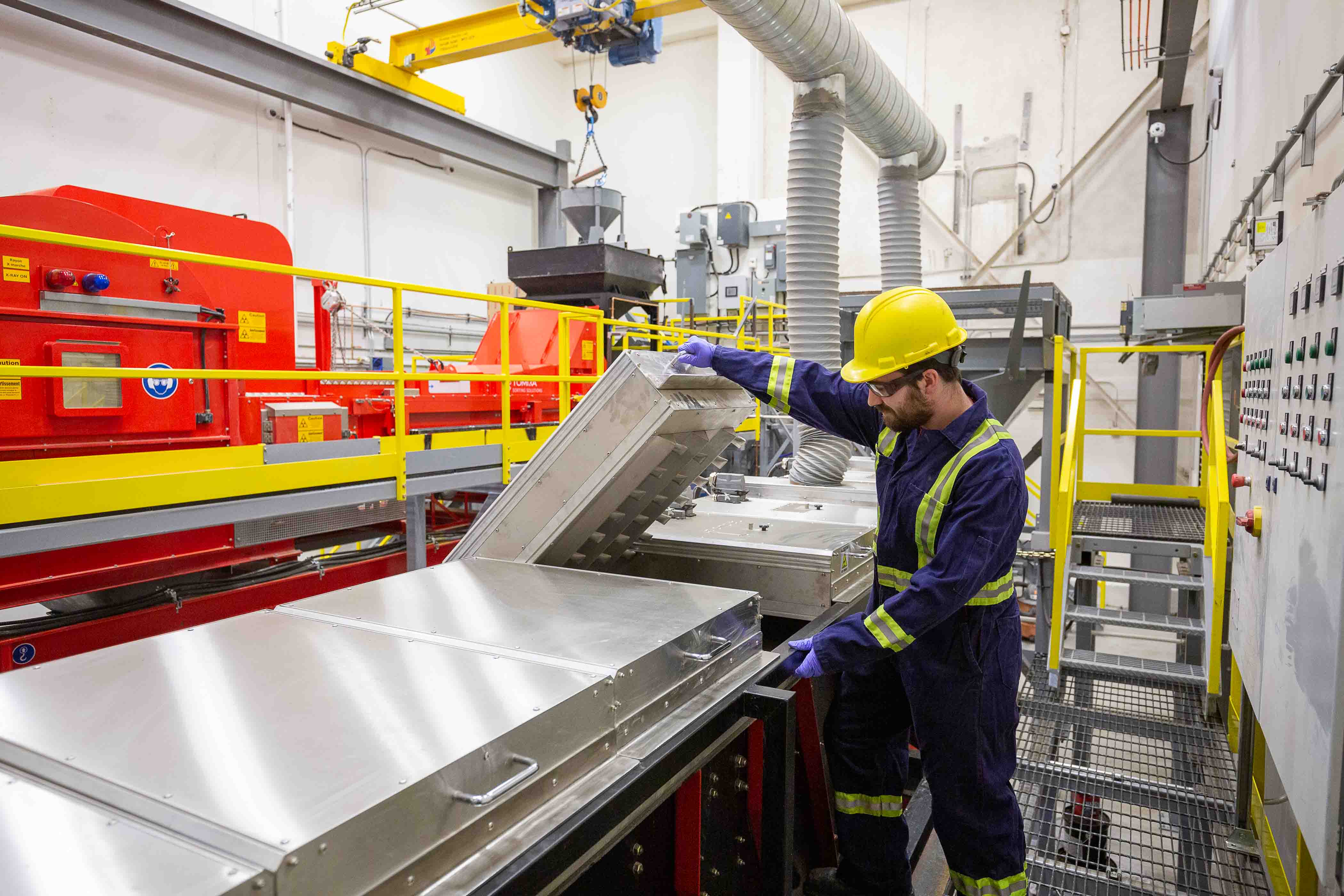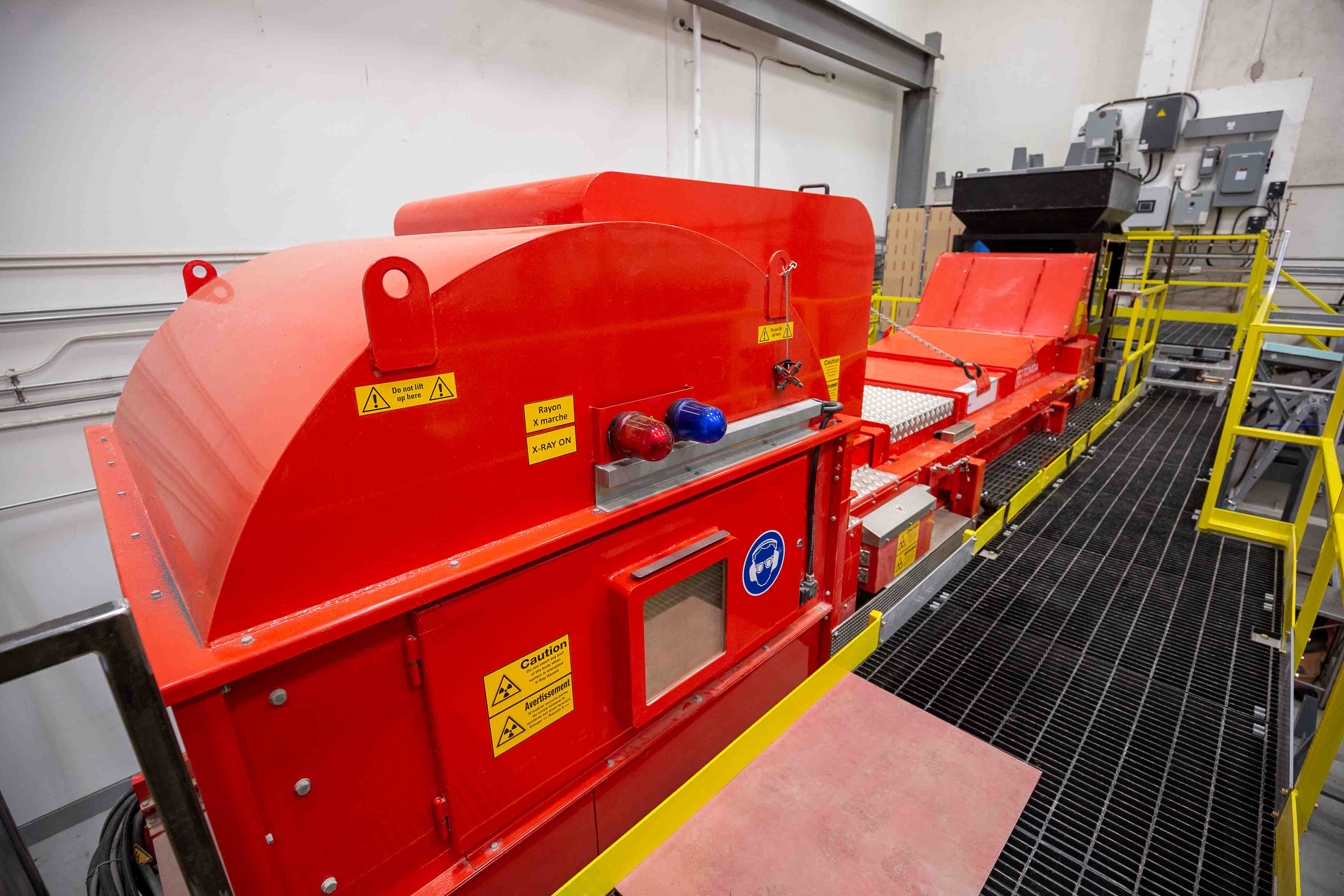
It is well-known that the crushing and grinding of ore consumes around 60 per cent of a mine’s operating and energy costs in addition to creating most of the greenhouse gas emissions. Advanced mining technologies, like sensor-based sorting, have the potential to address the challenges that industry now faces, including declining ore grades, water shortages and increasing environmental regulations.
Sensor-based sorting has been used in the food processing and waste/recycling industries for many years. In recent years, it has become more common in the mining industry.
As Jane Danoczi, Senior Process Engineer at SRC explains, the premise of sensor-based ore sorting is fairly simple. “It is just sorting – but using sensors to individually measure and evaluate a particle and then either reject or recover it based on the parameters being looked at.”
Watch our free two-part webinar series on Sensor-Based Sorting, co-hosted by CIM Magazine.
how does sensor-based sorting work?
Sensor-based sorting is typically used for particle sizes ranging between 0.5 to 300 mm and is completed prior to the application of fine comminution and chemical processing techniques. The goals are to remove waste before it enters production and recover the viable ore.
Danoczi says that prior to sensor-based sorting, operators were putting all the mined rock straight through the mill, grinding it up and then processing it all using chemicals and flotation processes to recover the viable minerals.
“With sensor-based sorting, these processes are still required however, it significantly reduces the amount of rock that will have to go through the entire process. That means less energy requirements and emissions, a decrease in the amount of chemicals used and a reduction in the size of tailings piles and tailings dams."
"But the best result for industry? Better grade ore and potential cost-savings,” says Danoczi.
Sensor-based sorting is evaluated on a project by project basis depending upon a number of factors, including the mineralogy of the ore, the sorting technology to use, the size fractions of the ore and the availability of natural resources, such as water and power.
Danoczi says there is a large amount of expertise required in sensor-based sorting. “You have to know the particle size, the feed presentation configuration, throughput requirements, machine size, understand the mineralogy of the rocks that you are differentiating from, the sorting algorithm, and so on.”
"Before the sorting begins, materials have to be suitably prepared, which typically consists of crushing and screening to optimize liberation,” she says. “In order to get the right efficiencies in sorting, the feed presentation must be correct, the material must be in a single layer, stable on the belt and be spaced adequately. The sensors have to be operating with the correct sensitivity, the sorting algorithm has to be programmed into the control system and the ejectors have to be set with the correct time delay.”

sensor-based sorting Types and technologies
Modern sorting machines are either a belt- or chute-type design.
In a belt-type system, material is presented to the sensor array lying in a fixed position on the belt. The belt length is designed to give the particles sufficient time to settle on the belt prior to being presented to the sensor.
In a chute-type system, the material slides down an angled chute and is presented to the sensors in free fall.
In the mining industry, the most common sensor-based sorting technology is X-ray transmission followed by colour, near-infrared and laser.
X-Ray Transmission
X-ray transmission may be a good solution if your rock has differences in density, which usually translate to atomic density differences. X-ray transmission measures how many x-rays come through a particle because when different minerals are x-rayed, a difference in the attenuation of the mineral is found.
If the mineral is very dense, then it would have a high attenuation and no x-rays will go through. On the other hand, if it is not very dense, then partial x-rays will come through the materials. It can also be explained similar to how a medical x-ray for humans works. Bones attenuate x-rays to a higher degree than muscles do, so there is a big contrast between the image we see on an x-ray of bones versus what we see of muscles.
Colour-Based Sorters
If there is a colour difference in the rocks being sorted, a colour-based sorter might be the best option. With proper illumination, a colour detector looks at the particle (similar to the human eye or a camera) and determines what is to be removed or recovered based on its colour. Colour sorting is very common and also used extensively in the food industry.
Near-Infrared Sorters
Near-infrared sorters are optical sorters that look at the longer wavelengths of light, which the human eye can’t see. Infrared detectors can see what we can’t in terms of differences in the minerals. It uses a similar technology as colour-based sorting but uses a longer electromagnetic wavelength. Infrared is able to pick up a variety of different rock types so it can be a good option.
Laser Sorters
Laser sorters are essentially a monochromatic excitation source that work at any wavelength. When a laser shines on a translucent mineral the light is scattered. Detectors then measure the scattered light and decide whether the mineral is of interest or not.
sorting expertise
Danoczi says that SRC has the in-house expertise to advance these technologies and assist industry in understanding what their options are. “SRC currently offers sensor-based sorting process development, testing and piloting as part of its full suite of SRC Mining and Energy services. Building on its existing expertise and facilities, SRC plans to expand these services further over the coming years.”
